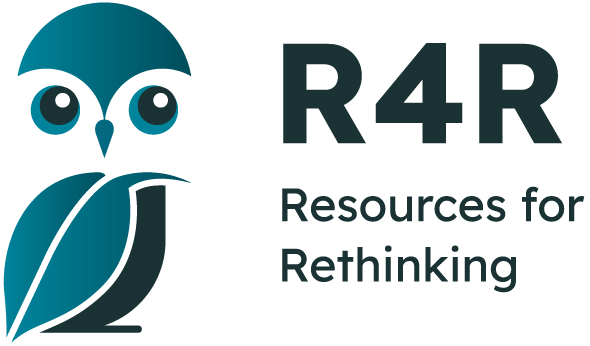- Home
- Tutorial
- Resource Guides
- Focus Areas
- LSF Programs
-
Professional
Development - Review Process
-
A project of LSF

Search for Resources
Description
The St. Lawrence River is a vital waterway for the Mohawk First Nation of Akwesasne, serving important roles in transportation and fishing. Ancient sturgeon, often referred to as "river monsters," are a significant cultural staple for the community. However, local fishers have observed concerning trends regarding the size of these impressive fish. Human development has significantly altered the river's shores and habitats, negatively affecting the growth of species like sturgeon. To address these issues, efforts are underway to restore natural shorelines. Habitat restoration initiatives, such as Rotary Creek, aim to reverse some of the ecological damage that has occurred.
After viewing the video, students learn about the Haudenosaunee Thanksgiving Address, a traditional speech of gratitude delivered by the Haudenosaunee people that honors and acknowledges all aspects of life. They research and reflect on how climate change may impact one of the natural elements or aspects mentioned in the Address, such as water, fish, or food plants.
General Assessment
Recommendation of how and where to use it
This resource focuses on the changes occurring in the St. Lawrence River and how habitat restoration can benefit native species, such as the sturgeon. The activity and accompanying video support Grade 7-10 Science lessons that investigate the impacts of climate change on habitats and ecosystems. Human development has significantly altered the shores and habitats of the St. Lawrence River through urbanization, industrialization, and agricultural practices. These changes have resulted in shoreline hardening, pollution, habitat loss, and disruptions in water flow. Students learn about the connections between abiotic (non-living) and biotic (living) components of a natural system, as well as how dynamic environments like shorelines are constantly changing.
To support the learning, students can research organizations that promote sustainable boating practices, water quality initiatives, and other environmental efforts. They can advocate for and support shoreline restoration projects that utilize natural solutions, such as planting native vegetation to improve water quality and prevent erosion in their regions. Additionally, students can educate others about the importance of the St. Lawrence River, its threats, and the need to balance human activities with the ecosystem’s need
Relevant Curriculum Units
The following tool will allow you to explore the relevant curriculum matches for this resource. To start, select a province listed below.
- Step 1Select a province
- Alberta
- British Columbia
- Manitoba
- New Brunswick
- Newfoundland & Labrador
- Northwest Territories
- Nova Scotia
- Step 2Select a grade level
- Grade 7
- Step 3Select a subject
- Science
- Step 4Relevant matches
- Science 7: Environmental Action
- Grade 8
- Step 3Select a subject
- Science
- Step 4Relevant matches
- Science 8: Climate Change
- Grade 10
- Step 3Select a subject
- Science
- Step 4Relevant matches
- Science 10: Sustainability of Ecosystems
- Nunavut
- Step 2Select a grade level
- Grade 7
- Step 3Select a subject
- Science
- Step 4Relevant matches
- Interactions and Ecosystems
- Grade 8
- Step 3Select a subject
- Science
- Step 4Relevant matches
- Freshwater and Saltwater Systems
- Interactions in Our Environment
- Grade 9
- Step 3Select a subject
- Science
- Step 4Relevant matches
- Biological Diversity
- Knowledge and Employability Science: Biological Diversity (Social and Environmental Contexts Emphasis)
- Grade 10
- Step 3Select a subject
- Science
- Step 4Relevant matches
- Experiential Science 10, Terrestial Systems: Resource Management and Population Dynamics
- Ontario
- Step 2Select a grade level
- Grade 7
- Step 3Select a subject
- Geography
- Step 4Relevant matches
- Natural Resources around the World: Use and Sustainability
- Science & Technology
- Step 4Relevant matches
- Life Systems: Interactions in the Environment
- Grade 8
- Step 3Select a subject
- Science & Technology
- Step 4Relevant matches
- Earth and Space Systems: Water Systems
- Grade 9
- Step 3Select a subject
- Science
- Step 4Relevant matches
- :Biology: Sustainable Ecosystems
- Grade 10
- Step 3Select a subject
- Science
- Step 4Relevant matches
- Science (Applied)::Earth and Space Science: Earth's Dynamic Climate
- Prince Edward Island
- Saskatchewan
- Step 2Select a grade level
- Grade 7
- Step 3Select a subject
- Science
- Step 4Relevant matches
- Science 7: Life Science: Interactions within Ecosystems
- Grade 8
- Step 3Select a subject
- Science
- Step 4Relevant matches
- Science 8: Water Systems on Earth
- Grade 10
- Step 3Select a subject
- Science
- Step 4Relevant matches
- Science 10: Climate and Ecosystem Dynamics
- Yukon Territory
Themes Addressed
Air, Atmosphere & Climate (1)
- Climate Change
Ecosystems (1)
- Biodiversity
Indigenous Knowledge (1)
- TEK -- Traditional Ecological Knowledge
Land Use & Natural Resources (1)
- Habitat Restoration

